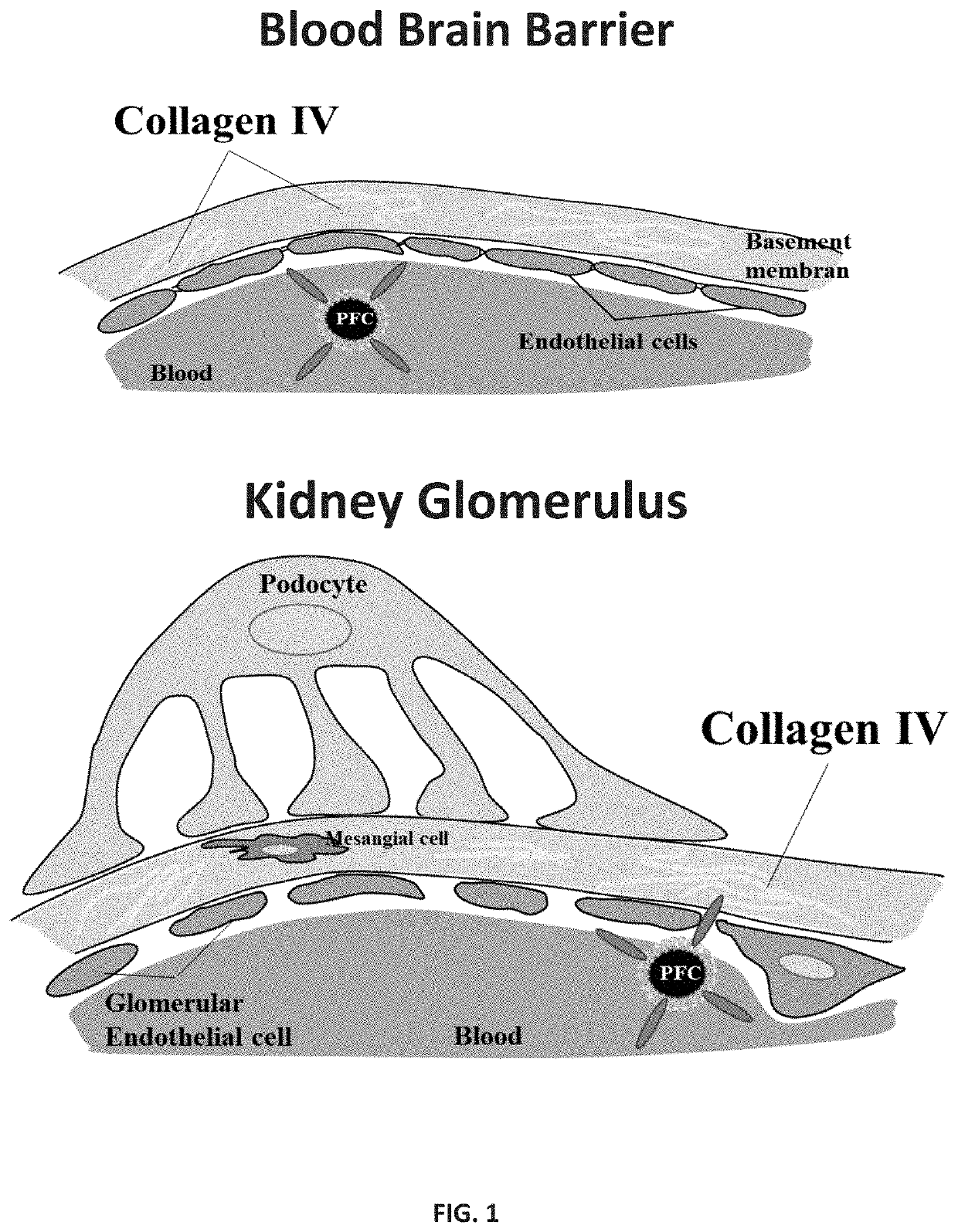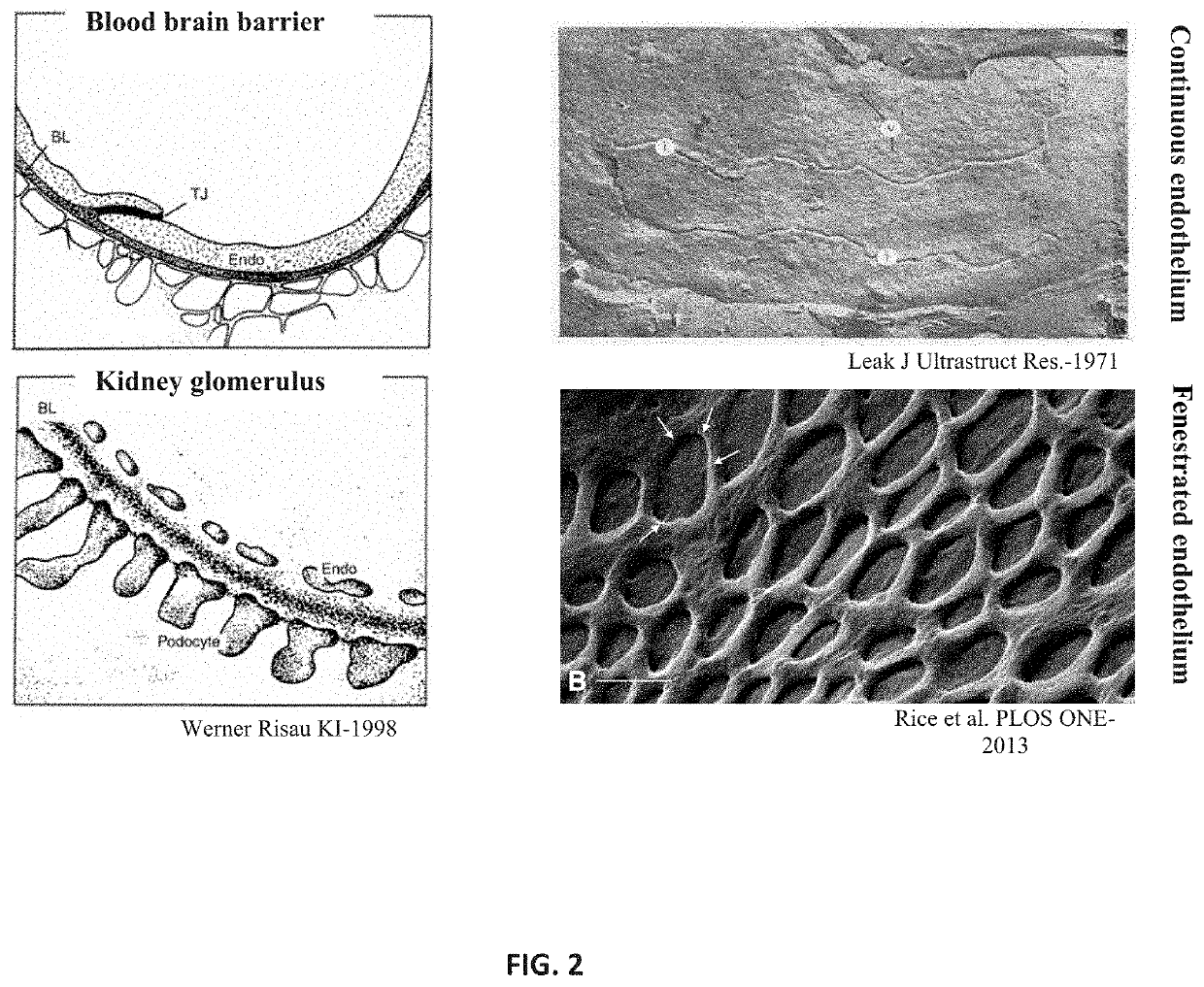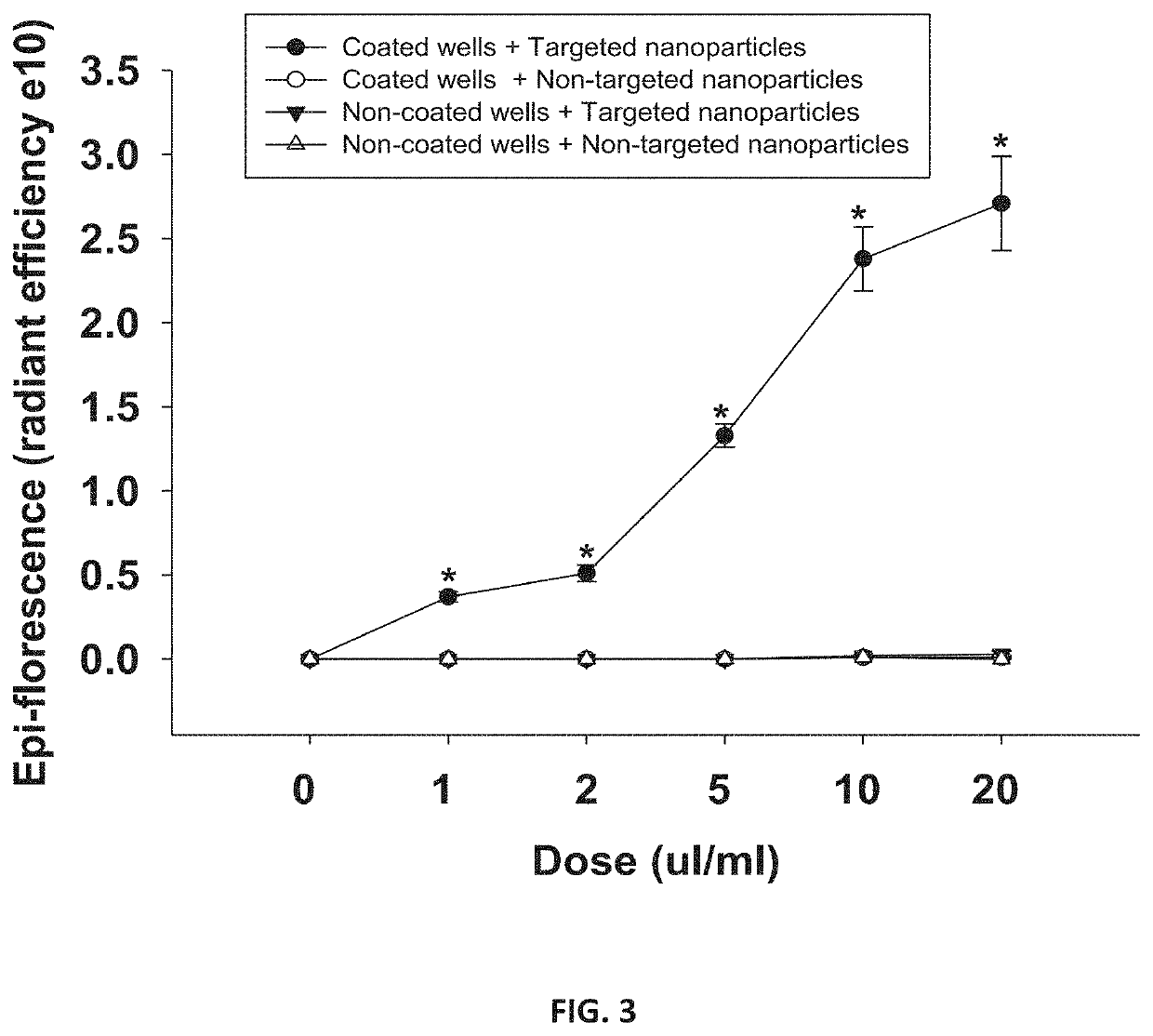Nanoparticle delivery system for diseases associated with major basement membrane components of blood vessels accessible from blood stream
a delivery system and basement membrane technology, applied in the direction of peptides, cardiovascular disorders, drug compositions, etc., can solve the problems of severe systemic side effects, increased morbidity and mortality of patients, and exposure to basement membranes, and achieve the effect of minimal side effects
- Summary
- Abstract
- Description
- Claims
- Application Information
AI Technical Summary
Benefits of technology
Problems solved by technology
Method used
Image
Examples
example 1
on of Nanoparticles
[0067]Glomerulonephritis and lupus nephritis usually require aggressive anti-inflammation and immunosuppressive therapy, which unfortunately, are associated with severe side effects. Therefore, development of new treatment strategies which minimize the side effects while maintaining high therapeutic efficiency is essential.
[0068]Perfluorocarbon (PFC) nanoparticles (NPs), having a nominal size of about 100 to about 250 nm, are primarily limited to the intravascular space unless the integrity of the endothelial barrier is compromised. Glomerular basement membrane (GBM) is the only site where collagen IV (Col4) has direct contact with blood via fenestrated capillary endothelium. As such, it is unexpected that PFC NPs could target Col4 in the GBM.
[0069]The inventors designed novel collagen IV-targeted PFC nanoparticles by coupling PFC nanoparticles with amine-carboxyl to a collagen IV targeting ligand, which selectively target kidney glomeruli by binding to collagen I...
example 2
Testing of Targeted Nanoparticles
[0074]Col4-targeted PFC NPs were formulated by coupling PFC NPs to a Col4-targeting ligand as described in Example 1. The binding specificity and efficiency of the Col4-targeted NPs were evaluated on Col4 coated plate surfaces and in vitro with primary cultured mesangial cells.
[0075]First, rhodamine labeled Col4 targeted or non-targeted PFC NPs were applied in Col4 pre-coated 96 wells plate at stepwise doses. Briefly, a collagen IV coated plate was generated by incubating with ready to use collagen IV (Fisher Scientific) at 5 μg / cm2 in a Nunc™ 96-well plate (ThermoFisher) over night at 4° C. Wells without collagen IV coating were used for non-specific binding control. The plate was washed thoroughly 5 times with PBS, blot dried and then incubated with either collagen IV targeted or non-targeted rhodamine labeled PFC nanoparticles at 5 different concentrations (1, 2, 5, 10 and 20 μl / ml) for 2 hours at 37° C. to evaluate dose dependence of the specific...
example 3
esting of Targeted Nanoparticles
[0077]Col4-targeted PFC NPs were formulated by coupling PFC NPs to a Col4-targeting ligand as described in Example 1. The binding specificity and efficiency of the Col4-targeted NPs were evaluated in vivo with C57BL / 6 mice.
[0078]To evaluate the targeting properties in vivo, C57BL / 6 mice (male, 8 weeks old, n=6) were administered one dose of 100 μl rhodamine labeled col4 targeted or non-targeted NPs intravenously (i.v.). At 24 hours after injections, the animals were anesthetized and systemically perfused with saline. The kidneys were harvested and fixed in 4% PFA. The kidney slices were visualized with a confocal microscope. The rhodamine labeled col4 targeted NPs were selectively visualized at glomeruli in the kidney sections, while non-targeted NPs were barely detectable anywhere.
[0079]Since the distribution of NPs at glomeruli may affect filtration and permeability, renal bio-safety was evaluated by measuring GFR, plasma creatinine (PCr), proteinur...
PUM
| Property | Measurement | Unit |
|---|---|---|
| Fraction | aaaaa | aaaaa |
| Composition | aaaaa | aaaaa |
Abstract
Description
Claims
Application Information
 Login to View More
Login to View More - R&D
- Intellectual Property
- Life Sciences
- Materials
- Tech Scout
- Unparalleled Data Quality
- Higher Quality Content
- 60% Fewer Hallucinations
Browse by: Latest US Patents, China's latest patents, Technical Efficacy Thesaurus, Application Domain, Technology Topic, Popular Technical Reports.
© 2025 PatSnap. All rights reserved.Legal|Privacy policy|Modern Slavery Act Transparency Statement|Sitemap|About US| Contact US: help@patsnap.com



